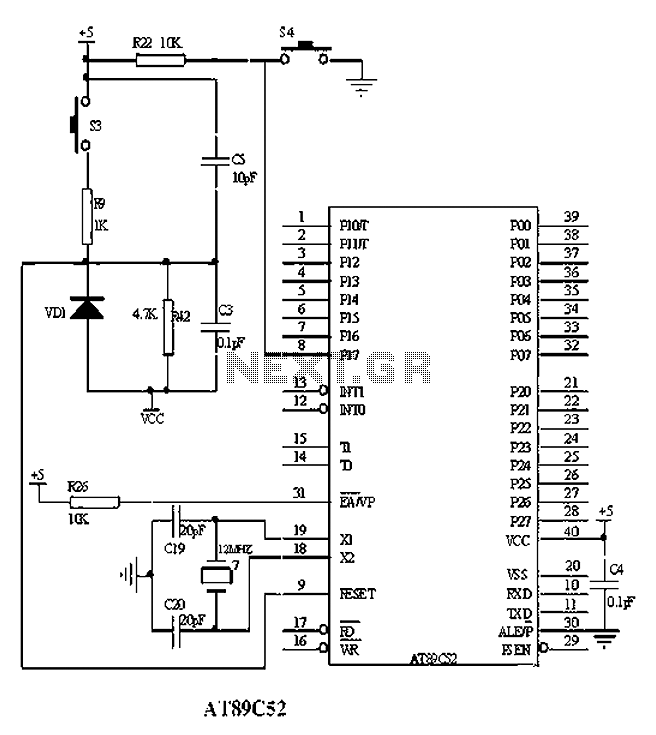
automatic garden light controller system

Similar to the previous circuit utilizing the LM358, this design is also cost-effective, priced under 100 rupees. It is a circuit intended for the automatic control of street lights and garden lights. Users do not need to manually turn the lights on and off repeatedly; once the circuit is activated, it will autonomously manage the lighting by detecting the ambient brightness in the garden or street. In this circuit, the LM358 integrated circuit operates as a comparator. Additionally, the BC548 transistor is configured as a switch to activate the relay. A 10K potentiometer is employed to adjust the circuit's sensitivity. When the ambient light level drops below a specified threshold (which can be set by adjusting the 10K potentiometer), the voltage at pin 3 (connected to the Light Dependent Resistor, LDR) exceeds the voltage at pin 2 (determined by the 10K potentiometer), resulting in a high output from the comparator. This output triggers the transistor and the connected relay.
The circuit design is centered around the LM358 operational amplifier, which serves as a voltage comparator. The LDR is placed in a voltage divider configuration with a fixed resistor, allowing the output voltage at pin 3 to vary according to the light intensity. The 10K potentiometer allows for fine-tuning the reference voltage at pin 2, enabling customization of the light activation threshold.
When ambient light levels decrease, the resistance of the LDR increases, causing the voltage at pin 3 to rise above the reference voltage at pin 2. This transition causes the output of the LM358 to switch from low to high, activating the BC548 transistor. The transistor, functioning as a switch, allows current to flow through the relay coil, energizing the relay and turning on the connected street or garden lights.
The relay used in this circuit should be rated appropriately for the load it will control, ensuring safe operation. The circuit can be powered by a suitable DC power supply, with the LM358 and BC548 operating within their specified voltage and current ratings. By incorporating a diode in parallel with the relay coil, back EMF generated when the relay is deactivated can be safely dissipated, protecting the transistor from potential damage.
This automatic lighting control circuit is particularly beneficial for outdoor applications, providing convenience and energy savings by ensuring lights are only activated when necessary. The simplicity and low cost of the components make this design accessible for various practical implementations.Just like my previous circuit using LM358 this is also very cheap, also under 100 rupees. This is a circuit for controlling the street lights, garden lights, automatically. You don`t need to turn it on and turn it off again and again, just turn on the circuit once and forget, it will automatically manage itself by sensing the available brightnessG‚in the garden or street. In this circuit the IC LM358 is working as a comparator. The transistor BC548 is wired as a switch to turn on the relay. The 10K pot is used to adjust the sensitivity of the circuit. When the darkness goes below a certain level (this level can be controlled byvaryingthe 1oK pot) the voltage at pin 3 (of LDR) will become greater than the voltage at pin 2 (set by 10K pot) and the comparator output goes high. This turns on thetransistorand relay connected to it. 🔗 External reference
The circuit design is centered around the LM358 operational amplifier, which serves as a voltage comparator. The LDR is placed in a voltage divider configuration with a fixed resistor, allowing the output voltage at pin 3 to vary according to the light intensity. The 10K potentiometer allows for fine-tuning the reference voltage at pin 2, enabling customization of the light activation threshold.
When ambient light levels decrease, the resistance of the LDR increases, causing the voltage at pin 3 to rise above the reference voltage at pin 2. This transition causes the output of the LM358 to switch from low to high, activating the BC548 transistor. The transistor, functioning as a switch, allows current to flow through the relay coil, energizing the relay and turning on the connected street or garden lights.
The relay used in this circuit should be rated appropriately for the load it will control, ensuring safe operation. The circuit can be powered by a suitable DC power supply, with the LM358 and BC548 operating within their specified voltage and current ratings. By incorporating a diode in parallel with the relay coil, back EMF generated when the relay is deactivated can be safely dissipated, protecting the transistor from potential damage.
This automatic lighting control circuit is particularly beneficial for outdoor applications, providing convenience and energy savings by ensuring lights are only activated when necessary. The simplicity and low cost of the components make this design accessible for various practical implementations.Just like my previous circuit using LM358 this is also very cheap, also under 100 rupees. This is a circuit for controlling the street lights, garden lights, automatically. You don`t need to turn it on and turn it off again and again, just turn on the circuit once and forget, it will automatically manage itself by sensing the available brightnessG‚in the garden or street. In this circuit the IC LM358 is working as a comparator. The transistor BC548 is wired as a switch to turn on the relay. The 10K pot is used to adjust the sensitivity of the circuit. When the darkness goes below a certain level (this level can be controlled byvaryingthe 1oK pot) the voltage at pin 3 (of LDR) will become greater than the voltage at pin 2 (set by 10K pot) and the comparator output goes high. This turns on thetransistorand relay connected to it. 🔗 External reference
Warning: include(partials/cookie-banner.php): Failed to open stream: Permission denied in /var/www/html/nextgr/view-circuit.php on line 713
Warning: include(): Failed opening 'partials/cookie-banner.php' for inclusion (include_path='.:/usr/share/php') in /var/www/html/nextgr/view-circuit.php on line 713





